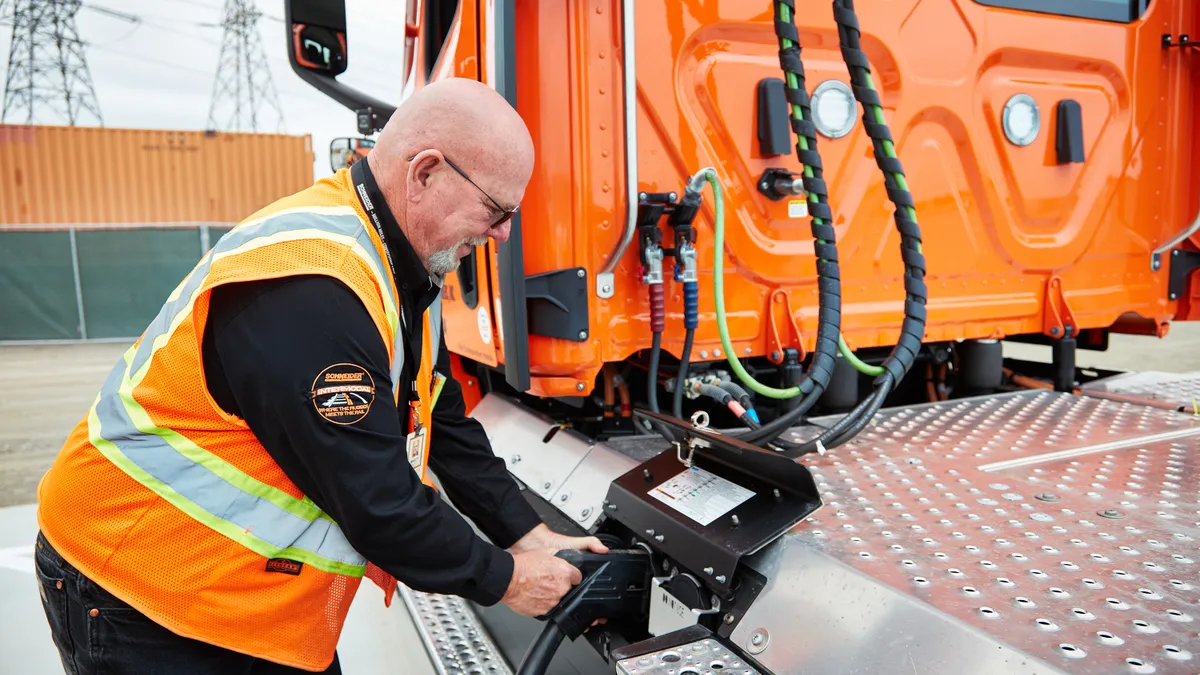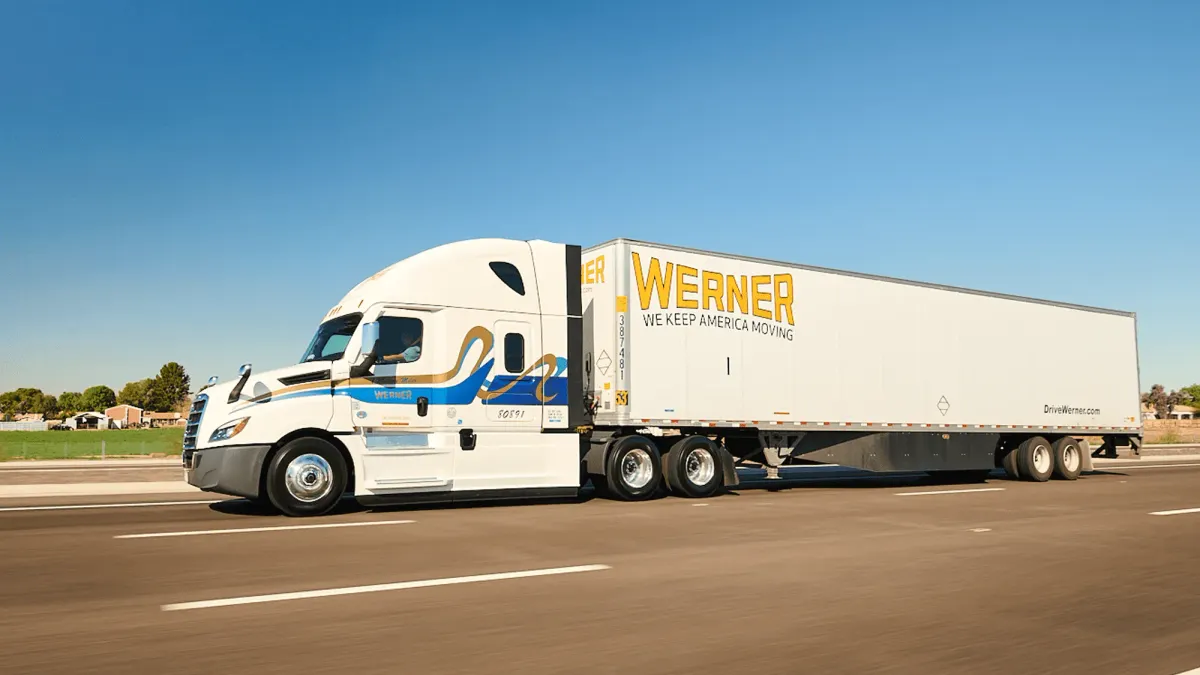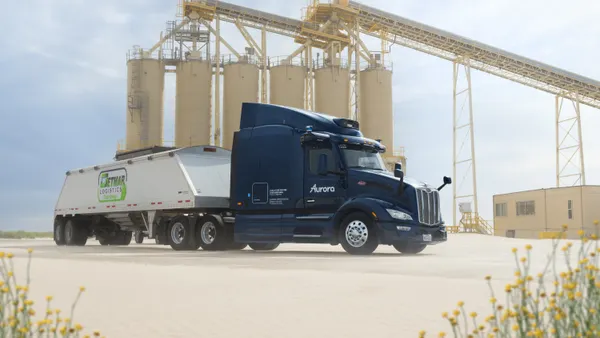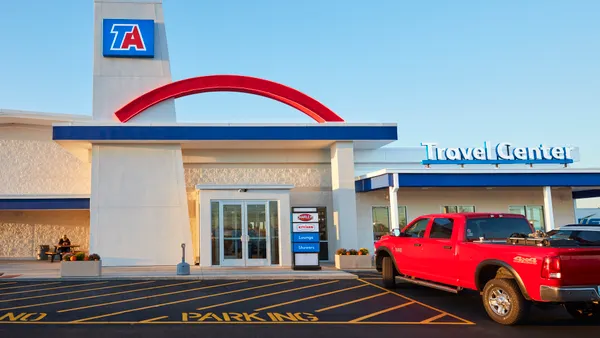Dive Brief:
- Schneider National has completed a 4,900-square-foot electric truck charging depot in Southern California capable of powering 32 trucks simultaneously, the company announced this month.
- The hub will support the TL carrier’s Freightliner eCascadia fleet, which is expected to grow to nearly 100 vehicles by the end of the year. The EV trucks, which have a 220-mile range, are already hauling shipments for Frito-Lay North America and Goodyear.
- The project was subsidized by the Joint Electric Truck Scaling Initiative, sponsored by the South Coast Air Quality Management District, the California Air Resources Board and the California Energy Commission.
Dive Insight:
As Schneider and other carriers order more electric trucks, ensuring they have a place to charge is a top concern. California has the strictest emissions laws in the country, but charging infrastructure — particularly for heavy-duty trucks — hasn’t sprouted up as quickly.
The charging hub at the carrier’s South El Monte Intermodal Operations Center can provide an 80% charge within 90 minutes, according to Schneider.
“It was important to develop onsite charging because it is the most efficient solution to power our growing electric fleet,” Schneider President and CEO Mark Rourke said in a statement. “With the infrastructure deficiency, we found that we needed to collaborate with a wide array of experts to see our vision come to fruition.”
The Green Bay, Wisconsin-based carrier, which has received about a third of its expected EV trucks, has put public and private money behind its emissions-lowering efforts.
Funding for 50 of Schneider’s 92 battery-electric trucks came from JETSI, which is part of California Climate Investments, a statewide initiative to cut emissions, particularly in disadvantaged communities.
Of the other 42 trucks, 30 are funded by California's Hybrid and Zero-Emission Truck and Bus Voucher Incentive Project. Seven were paid for by the Volkswagen Environmental Mitigation Trust, and five were jointly funded by the EPA’s FY18 Targeted Airshed Grant and the voucher incentive initiative.
“We know the future of sustainable transportation includes electric,” Rourke said. “That is why we invested and collaborated with stakeholders along the supply chain to work together to create this infrastructure and ultimately lower carbon emissions. This would not be possible without our funding and grant agencies.”










